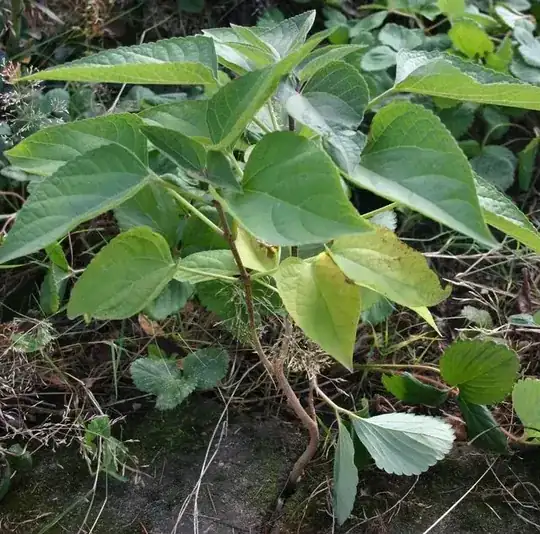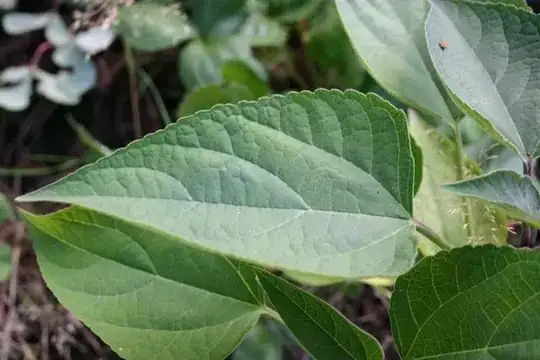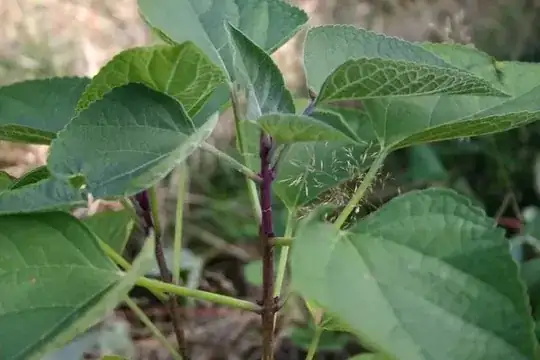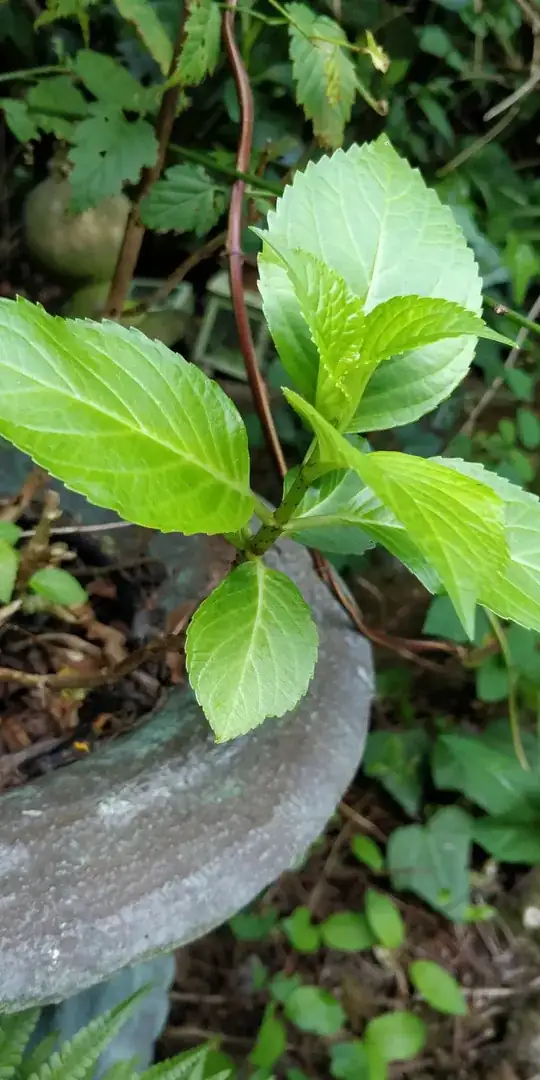I found this plant growing in my garden in the crack between two retaining wall blocks.
- it's currently about 14" (35cm) tall and has grown this year.
- it seems to branch freely; the one pictured has two branches in addition to the main stem, with no sign of damage to the main stem to encourage branching.
- leaves are opposite, ovate, with crenate margins. The largest leaves are about 5½" (13cm) long.
- the tips of the growing stems are a dark reddish-purple but turn woody just a couple of inches from the tip. The woodiness is the reason I think it will grow up to be a shrub.
- it's growing in Portland, Oregon, USA (USDA Zone 8a).
Click any photo for full size



